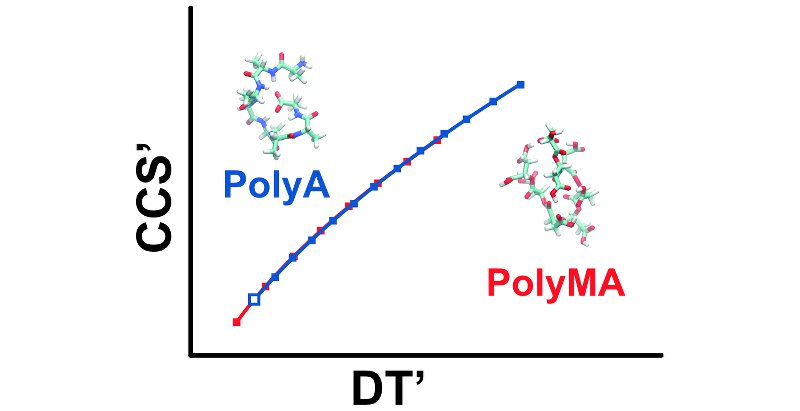
Nov. 5, 2015
Research Highlight
Calibrating a Mass Spec for Studying Chemical Evolution

The study focues on two calibrant series, polyalanine and polymalic acid. Credit: Forsythe et al. 2015
A recent study from the Center for Chemical Evolution will improve the accuracy and precision of data obtained by a form of mass spectrometry known as traveling-wave ion mobility-mass spectrometry.
Mass spectrometry is a prolific technique in chemistry that is used to study the chemical makeup of samples. Ion mobility spectrometry is a method for separating ionized molecules in the gas phase based on their molecular size and shape instead of their mass. For example, if two molecules had the same mass, but one was shaped like a rod and the other one was shaped like a sphere, mass spectrometry alone would not be able to differentiate them. However, coupling ion mobility with mass spectrometry would allow you to separate them based on their shape.
Mass spectrometry is an essential tool used by many astrobiologists on Earth, and has been included on numerous space missions. The team behind the study is currently using traveling-wave ion mobility-mass spectrometry to study the shape and structure of polymers that could have been precursors to protein on the early Earth.
The Center for Chemical Evolution is a joint effort supported by the National Science Foundation (NSF) and the NASA Astrobiology Program. The study, “Collision cross section calibrants for negative ion mode traveling wave ion mobility-mass spectrometry,” was published in the journal Analyst.